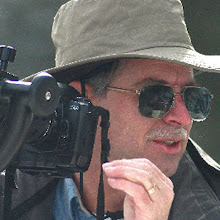I've been writing for various hobby and professional magazines for 25 years now and after speaking with many editors over the years, as well as attending several writing and photography workshops on this subject, I've got it down pretty well. I go over much more detail in the Business of Photography seminar, but I did want to mention an easy way to get sample images (or "comps", as they're called) to photo editors and buyers.
First, you need to establish a relationship with the editor(s). Avoid contacting the "editor in chief" as they're usually more a management role, than "worker bee". Don't be afraid to drop the photo editor or assistant editor a short email or letter describing yourself along with a few sample images. Don't overwhelm them - they're under constant pressure to "get out the next issue" and they may take a while to get back to you. Generally, they prefer not to take phone calls. One thing I do 2 to 4 times a year is send them a "promo sheet" with a few of your BEST recent representative images. Need I mention, images that reflects the needs of the specific magazine? Make sure it's printed on classy paper and include your contact info. You want it beautiful enough they'll want to pin it up on their wall!
Second, you need to know what images they need. Don't just send a bunch of unsolicited pictures - especially via email. Many magazines publish writers and photographers guidelines on their Web site. You also want to locate the "editorial calendar", oftentimes located in the "Advertisers" section. Be sure to read through these, as often they will mention how they'd prefer to receive pictures (email, CD, light table on Web site). If you can, request to get on their "want list" email distribution. This is an emailed listing of specific images they're looking for in the months ahead. Remember, magazines have a three to six-month lead time. Right now, they're working on the spring through summer 2011 issues.
Next is the actual delivery of comps (sample low-res images they can use for the initial pasteup drafts). Most editors won't want you to attach them to an email, unless they're in a hurry to get them. This is where you really need to listen to how they wish them delivered. Lately, I use Photoshop Lightroom to adjust the images and then I use the included plug-in that uploads the selected images directly to my PhotoShelter account. Once the upload is complete, I create a "light table" section for just the editor to see. PhotoShelter automatically creates the email notification and includes a series of thumbnail images with your pictures. There is an included link within the email they can click on to see the larger images and to download comps for layout purposes. The whole delivery process takes just a few minutes.
Should one, or more, of your images get accepted, the editor will want the originals (high-res) converted to TIFF and delivered "yesterday", so you'll want to have already loaded in some ftp software in order to upload the images directly to one of their ftp servers. I use CuteFTP, which works well. The editor will provide the ftp address and password to get access to their server. That's it!
Friday, December 03, 2010
Subscribe to:
Post Comments (Atom)





No comments:
Post a Comment